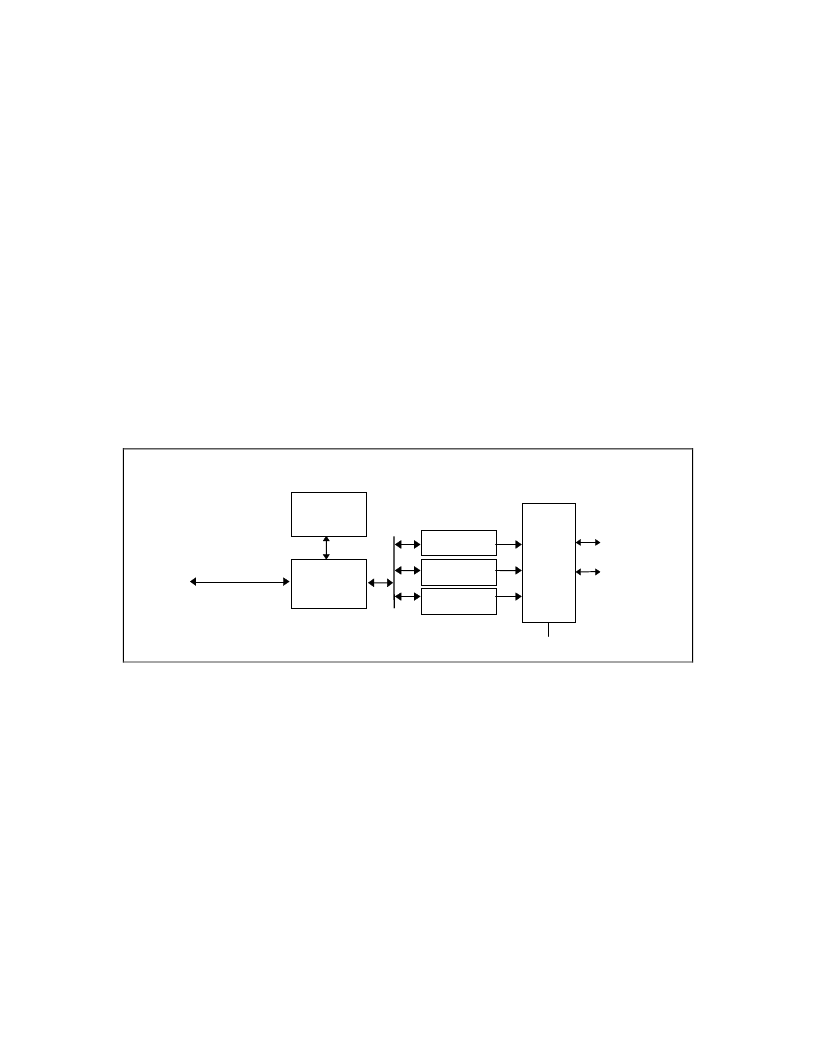- 您現(xiàn)在的位置:買賣IC網(wǎng) > PDF目錄358934 > LPC47M172-NR (STANDARD MICROSYSTEMS CORP) ADVANCED I/O CONTROLLER WITH MOTHERBOARD GLUE LOGIC PDF資料下載
參數(shù)資料
| 型號: | LPC47M172-NR |
| 廠商: | STANDARD MICROSYSTEMS CORP |
| 元件分類: | 外設(shè)及接口 |
| 英文描述: | ADVANCED I/O CONTROLLER WITH MOTHERBOARD GLUE LOGIC |
| 中文描述: | MULTIFUNCTION PERIPHERAL, PQFP128 |
| 封裝: | 14 X 20 MM, 2.7 MM HEIGHT, MQFP-128 |
| 文件頁數(shù): | 77/228頁 |
| 文件大小: | 1269K |
| 代理商: | LPC47M172-NR |
第1頁第2頁第3頁第4頁第5頁第6頁第7頁第8頁第9頁第10頁第11頁第12頁第13頁第14頁第15頁第16頁第17頁第18頁第19頁第20頁第21頁第22頁第23頁第24頁第25頁第26頁第27頁第28頁第29頁第30頁第31頁第32頁第33頁第34頁第35頁第36頁第37頁第38頁第39頁第40頁第41頁第42頁第43頁第44頁第45頁第46頁第47頁第48頁第49頁第50頁第51頁第52頁第53頁第54頁第55頁第56頁第57頁第58頁第59頁第60頁第61頁第62頁第63頁第64頁第65頁第66頁第67頁第68頁第69頁第70頁第71頁第72頁第73頁第74頁第75頁第76頁當前第77頁第78頁第79頁第80頁第81頁第82頁第83頁第84頁第85頁第86頁第87頁第88頁第89頁第90頁第91頁第92頁第93頁第94頁第95頁第96頁第97頁第98頁第99頁第100頁第101頁第102頁第103頁第104頁第105頁第106頁第107頁第108頁第109頁第110頁第111頁第112頁第113頁第114頁第115頁第116頁第117頁第118頁第119頁第120頁第121頁第122頁第123頁第124頁第125頁第126頁第127頁第128頁第129頁第130頁第131頁第132頁第133頁第134頁第135頁第136頁第137頁第138頁第139頁第140頁第141頁第142頁第143頁第144頁第145頁第146頁第147頁第148頁第149頁第150頁第151頁第152頁第153頁第154頁第155頁第156頁第157頁第158頁第159頁第160頁第161頁第162頁第163頁第164頁第165頁第166頁第167頁第168頁第169頁第170頁第171頁第172頁第173頁第174頁第175頁第176頁第177頁第178頁第179頁第180頁第181頁第182頁第183頁第184頁第185頁第186頁第187頁第188頁第189頁第190頁第191頁第192頁第193頁第194頁第195頁第196頁第197頁第198頁第199頁第200頁第201頁第202頁第203頁第204頁第205頁第206頁第207頁第208頁第209頁第210頁第211頁第212頁第213頁第214頁第215頁第216頁第217頁第218頁第219頁第220頁第221頁第222頁第223頁第224頁第225頁第226頁第227頁第228頁

7.6 INFRARED INTERFACE
SMSC DS – LPC47M192
Page 77
Rev. 03/30/05
DATASHEET
The infrared interface provides a two-way wireless communications port using infrared as a transmission medium.
Two IR implementations have been provided for the second UART in this chip (logical device 5), IrDA and Amplitude
Shift Keyed IR. The IR transmission can use the standard UART2 TXD2 and RXD2 pins or optional IRTX2 and
IRRX2 pins. These can be selected through the configuration registers.
IrDA 1.0 allows serial communication at baud rates up to 115.2 kbps. Each word is sent serially beginning with a
zero value start bit. A zero is signaled by sending a single IR pulse at the beginning of the serial bit time. A one is
signaled by sending no IR pulse during the bit time. Please refer to the AC timing for the parameters of these pulses
and the IrDA waveform.
The Amplitude Shift Keyed IR allows asynchronous serial communication at baud rates up to 19.2K Baud. Each
word is sent serially beginning with a zero value start bit. A zero is signaled by sending a 500KHz waveform for the
duration of the serial bit time. A one is signaled by sending no transmission during the bit time. Please refer to the
AC timing for the parameters of the ASK-IR waveform.
If the Half Duplex option is chosen, there is a time-out when the direction of the transmission is changed. This time-
out starts at the last bit transferred during a transmission and blocks the receiver input until the timeout expires. If the
transmit buffer is loaded with more data before the time-out expires, the timer is restarted after the new byte is
transmitted. If data is loaded into the transmit buffer while a character is being received, the transmission will not
start until the time-out expires after the last receive bit has been received. If the start bit of another character is
received during this time-out, the timer is restarted after the new character is received. The IR half duplex time-out is
programmable via CRF2 in Logical Device 5. This register allows the time-out to be programmed to any value
between 0 and 10msec in 100usec increments.
The following figure shows the block diagram of the IR components in the LPC47M192:
ACE UART
IrDA SIR
Sharp ASK
COM
ACE
Registers
Output
MUX
IR
COM
Host Interface
IR Options Register,
Bit 6
IR Transmit Pins
The following description pertains to the TXD2/IRTX and IRTX2 pins of the LPC47M192.
Following a VTR POR, the IRTX and IRTX2 pins will be output and low. They will remain low until one of the
following conditions are met:
IRTX2/GP35 Pin. This pin defaults to the IRTX2 function.
1. This pin will remain low following a VCC POR until IRTX2 function is selected for the pin, serial port 2 is
enabled by setting the activate bit, at which time the pin will reflect the state of the transmit output of the
IR block (if IR is enabled through the IR Option Register for Serial Port 2).
2. This pin will remain low following a VCC POR until the GPIO output function is selected for the pin, at
which time the pin will reflect the state of the GPIO data bit if it is configured as an output.
GP53/TXD2(IRTX) Pin. This pin defaults to the GPIO output function.
1. This pin will remain low following a VCC POR until the TXD2 (IRTX) function is selected for the pin AND
serial port 2 is enabled by setting the activate bit, at which time the pin will reflect the state of the IR
transmit output of the IR block (if IR is enabled through the IR Option Register for Serial Port 2).
相關(guān)PDF資料 |
PDF描述 |
|---|---|
| LPC47N267-MN | 100 Pin LPC Notebook I/O with X-Bus Interface |
| LPC47N227-MN | 100 Pin Super I/O with LPC Interface for Notebook Applications |
| LPC47N227TQFP | 100 Pin Super I/O with LPC Interface for Notebook Applications |
| LPC47M182-NR | ADVANCED I/O CONTROLLER WITH MOTHERBOARD GLUE LOGIC |
| LPC47M182-NW | ADVANCED I/O CONTROLLER WITH MOTHERBOARD GLUE LOGIC |
相關(guān)代理商/技術(shù)參數(shù) |
參數(shù)描述 |
|---|---|
| LPC47M172-NW | 功能描述:輸入/輸出控制器接口集成電路 Enhanced Super I/O Contrllr RoHS:否 制造商:Silicon Labs 產(chǎn)品: 輸入/輸出端數(shù)量: 工作電源電壓: 最大工作溫度:+ 85 C 最小工作溫度:- 40 C 安裝風格:SMD/SMT 封裝 / 箱體:QFN-64 封裝:Tray |
| LPC47M182 | 制造商:SMSC 制造商全稱:SMSC 功能描述:ADVANCED I/O CONTROLLER WITH MOTHERBOARD GLUE LOGIC |
| LPC47M182_07 | 制造商:SMSC 制造商全稱:SMSC 功能描述:Advanced I/O Controller with Motherboard GLUE Logic |
| LPC47M182E-NW | 功能描述:輸入/輸出控制器接口集成電路 Advanced I/O Ctrl MotherBoard GLUE RoHS:否 制造商:Silicon Labs 產(chǎn)品: 輸入/輸出端數(shù)量: 工作電源電壓: 最大工作溫度:+ 85 C 最小工作溫度:- 40 C 安裝風格:SMD/SMT 封裝 / 箱體:QFN-64 封裝:Tray |
| LPC47M182-NR | 制造商:Rochester Electronics LLC 功能描述:- Bulk |
發(fā)布緊急采購,3分鐘左右您將得到回復(fù)。